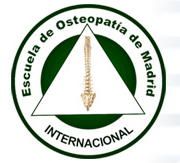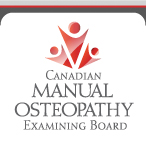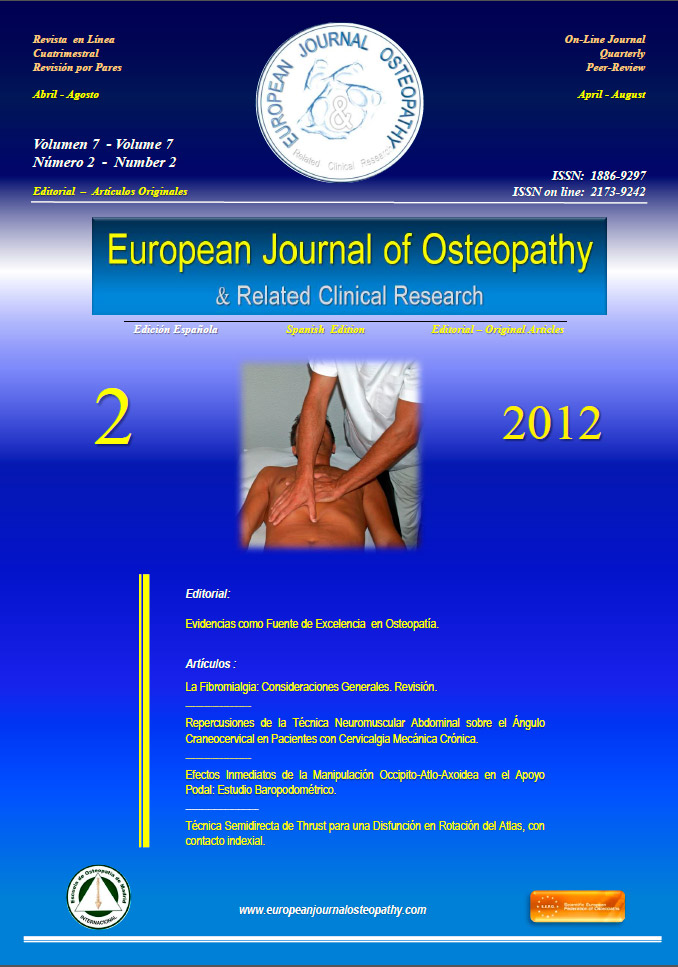The human species is molded by instinct far less than any other animal species. We are unique because our nervous system is not wired in at birth. For the greater part we acquire our habits as we go. The calf drops from the cow clothed in fur, stands, finds a teat, and starts sucking. The human baby is born naked and helpless. It can only cry and flail about when its needs are not met. Animals are born completely wired with most of the patterns they will use during their entire lifetimes, and their brain size changes very little.
Humans are born with the most complex and sophisticated nervous systems but with only one reflex operational at birth, the falling instinct which causes the baby to contract when dropped. We learn most of the patterns we need to survive, and at maturity our brains are five times larger than at birth. Compared with animals we have an infinite capacity to learn different patterns of behavior. The sophistication of our nervous system makes self-awareness and muscular refinement possible to a remarkable degree. We have the possibility of living gracefully in full awareness.
If our nervous system ultimately gives us an advantage over animals, it also allows us to learn inefficient, aberrated patterns. To perform the simple act of sitting, for example, we rarely align our structure and allow gravity to support us. Instead we clench our thigh muscles, strain our back, constrict our breathing, push our neck forward, and so on, eventually impairing not only our motor activity but our thoughts and feelings as well.
What we wire into our nervous systems are not separate patterns of movement, thought, and feeling, but entire experiences. The self records the movements, thoughts, and feelings of an experience as a whole. They are inseparable, and changes in any are reflected in changes in all.
Feldenkrais focused on changing maladaptive patterns by bringing into awareness the motor components of undesired behavior. He maintained that motor activity was essential for any behavior, not only observable physical movements but even for thought and feelings and even consciousness itself. The following references are excerpted from two lectures Feldenkrais gave at the Copenhagen Congress of Functional Movement and Relaxation in the early 1970s.
Moshe would push this leg toward the head making it even shorter. Now the muscle which has been pulling the leg cannot work because Moshe is pushing the leg shorter than the muscle can pull it. Since the muscle cannot work, it has to relax. Then Moshe would stretch the other psoas muscle even longer. Being thus stimulated, the muscle gets new blood which brings nourishment and removes wastes. A new awareness is created in both muscles so that when Moshe lets go, both muscles are more balanced than before.
In his group work Moshe strived to enhance awareness in action. He tried to increase a person's sensitivity to his or her body by emphasizing movements done in small gradients with complete awareness. Usually he began simply by bringing awareness into the act of lying on the floor:
When awareness pervades the body, a person's self-image is complete. When a person's self-image is complete, he or she embodies gracefulness. Consider Moshe's description of the correct posture:
Go to Content
Humans are born with the most complex and sophisticated nervous systems but with only one reflex operational at birth, the falling instinct which causes the baby to contract when dropped. We learn most of the patterns we need to survive, and at maturity our brains are five times larger than at birth. Compared with animals we have an infinite capacity to learn different patterns of behavior. The sophistication of our nervous system makes self-awareness and muscular refinement possible to a remarkable degree. We have the possibility of living gracefully in full awareness.
If our nervous system ultimately gives us an advantage over animals, it also allows us to learn inefficient, aberrated patterns. To perform the simple act of sitting, for example, we rarely align our structure and allow gravity to support us. Instead we clench our thigh muscles, strain our back, constrict our breathing, push our neck forward, and so on, eventually impairing not only our motor activity but our thoughts and feelings as well.
What we wire into our nervous systems are not separate patterns of movement, thought, and feeling, but entire experiences. The self records the movements, thoughts, and feelings of an experience as a whole. They are inseparable, and changes in any are reflected in changes in all.
Feldenkrais focused on changing maladaptive patterns by bringing into awareness the motor components of undesired behavior. He maintained that motor activity was essential for any behavior, not only observable physical movements but even for thought and feelings and even consciousness itself. The following references are excerpted from two lectures Feldenkrais gave at the Copenhagen Congress of Functional Movement and Relaxation in the early 1970s.
My contention is that the unity of mind and body is an objective reality, that they are not entities related to each other in one fashion or another, but an inseparable whole while functioning. To put this point more clearly, I contend that a brain without motor functions could not think or at least that the continuity of mental functions is assured by corresponding motor functions.Feldenkrais had two basic, broad ideals guiding his work: 1 Movement should be limited by the skeletal structure and not the musculature. 2 Action should be done gracefully with maximum efficiency. He wrote:
Let me substantiate this point by some striking examples: a. It takes us longer to think the number from twenty to thirty than from one to ten, though the numerical intervals are the same from 1-10 and 20-30. The difference lies in the fact that the time intervals are proportional to the time needed to utter the corresponding numbers aloud. This suggests that we actually mobilize the brain mechanism of the vocal apparatus. . . . b. In counting objects we find, in general, the linkage of the motor parts of vision and verbalization keeping down the speed of thought to the rate of the motor elements. c. Most people cannot think clearly without mobilizing the motor function of the brain enough to become aware of the word patterns representing the thought.... These examples indicate that an improvement in speed and clarity of thought may be obtained by reducing the extent of movement and smoothing the performance of the muscular controls.
We have no sensation of the inner workings of the central nervous system; we can feel their manifestations only as far as the eye, the vocal apparatus, the facial mobilization and the rest of the soma provoke our awareness. This is the state of consciousness!
Let us consider feeling in more detail. a. I am buoyant, my breath even, my face at the point of smiling. I feel gay. My motor attitude is quite different when I feel disgusted. Then my face is like that of a man on the brink of or immediately after vomiting. b. I clench my lower jaw; my fists and breath are held; my pulse is accelerated; my eyes and head move in jerks, and my neck is stiff. I am angry and on the verge of hurting, but I am trying not to let myself go. . . . There is usually a clear motor pattern sufficient even for an objective evaluation of the intensity of feelings.
Not only individual development or abnormality can be followed through the soma but even wider cultural and racial attitudinal differences, such as the introversion, the non-attachment, the indifference of the Hindu and the looseness of his hip joints; and the extroverted, clinging, holding-on, time-is-money attitude of the industrial nations with their utter inability to sit cross-legged. And, of course, to soften and bring to normal one's hip joints, one must spend time looking at oneself and giving up attachments.
The advantage of approaching the unity of mental and muscular life through the soma lies in the fact that the muscular expression is simpler. It is concrete and simple to locate. It is also incomparably easier to make a person aware of what is happening and therefore yields faster and more direct results.
The head movements must have no predilection for particular directions. The "normal" head should have easy access to all directions of the anatomically possible range. The limiting factor should be the skeletal structure and not the muscular impediments. It can be shown that every adult uses only a part of the theoretical possibilities of the human frame.Feldenkrais called his individual work Functional Integration and his group work Awareness through Movement. He sought to teach clients to become aware of what they were doing. He often said, "If you don't know what you are doing, you certainly can't do what you want to do." In his individual work, in addition to exercises in movement and awareness, Feldenkrais used his hands to create new awareness in the nervous system. He described his individual work briefly as follows:
The healthy co-ordinated movements of the body as a whole obey the mechanical principle of least action, while the muscles work in step and perform their task with the least expenditure of metabolic energy. In view of these principles governing the operations of the whole human frame one can decide on normal and abnormal behavior.
I never deal with the affected member or articulation before an improvement in the head-neck relationship and the breathing has been brought about. This, in turn, cannot be achieved without a betterment of the spine and thorax configuration. Again the pelvis and abdomen must be corrected. In practice the procedure is a successive series of approximations, each one allowing a further improvement in the segment just dealt with.One of Moshe's techniques was to go with aberrations until they released. Some aberrations occur when two antagonistic muscles or muscle groups oppose each other rather than cooperate. Moshe would exaggerate the aberration, forcing the dominant muscle to relax since he was doing its work and stretching the inferior muscle and rejuvenating it with a new, fresh flow of blood. Take, for example, his work on scoliosis, a lateral curve in the spine. In scoliosis one psoas muscle is skinny and stringy with poor muscle tone. It is far too long in comparison with the other psoas muscle which is bunched up, thick, short, hard, and painful when worked. When a person with scoliosis lies down, the leg on the thick, hard side is shorter than the other and tends to turn out.
I insist on thirty to forty sessions at a daily rate and ten twice or three times a week until the major complaint is gone. Normally, that is in about fifty percent of the cases, pains and inability to use a member disappear before the daily sessions are over. . . . In due course I go through thirty different situations up to sitting, standing, walking, and balancing on two wooden rollers.
Moshe would push this leg toward the head making it even shorter. Now the muscle which has been pulling the leg cannot work because Moshe is pushing the leg shorter than the muscle can pull it. Since the muscle cannot work, it has to relax. Then Moshe would stretch the other psoas muscle even longer. Being thus stimulated, the muscle gets new blood which brings nourishment and removes wastes. A new awareness is created in both muscles so that when Moshe lets go, both muscles are more balanced than before.
In his group work Moshe strived to enhance awareness in action. He tried to increase a person's sensitivity to his or her body by emphasizing movements done in small gradients with complete awareness. Usually he began simply by bringing awareness into the act of lying on the floor:
Everyone examines attentively the contact of his body with the floor and gradually learns to detect considerable differences, points where the contact is feeble or non-existent and others where it is full and distinct. This training develops the awareness of the location of the muscles which produce the weak contact through the permanent, excessive tension of holding parts of the body up from the floor. A certain improvement in comportment can be achieved through muscular awareness only but beyond that no improvement will be carried over into normal life without increasing the awareness of the skeleton and its orientation. Here the most difficult joints are the hip joints. The awareness of the location and function in these joints is non-existent compared with that of people who sit on the ground and not on chairs. The chair sitter is almost without exception completely out of place when locating the hip joints. Moreover, he uses his legs as if they were articulated at the points where he has them articulated in his body image and not where they are.For a wide range of human activities the Fechner-Weber law states that the least detectable difference is determined by the ratio of the change in the stimulus to the overall stimulus. Moshe said:
I usually make it clear that the work is to lead to awareness in action, or the ability to make contact with one's own skeleton and muscles and with the environment practically simultaneously. This is not relaxation, for true relaxation can be maintained only when doing nothing. The aim. . .is healthy, powerful, easy and pleasurable exertion. The reduction of tension is necessary because efficient movement is effortless.
If I hold a twenty pound weight, I cannot detect a fly landing on it because the least detectable difference in the stimulus is half a pound. On the other hand, if I hold a feather, a fly landing on it makes a great difference. Obviously then, in order to be able to tell differences in exertion one must first reduce the exertion. Finer and finer performance is possible only if the sensitivity, that is, the ability to feel the difference is improved.Consequently, Moshe urged his clients to do less than they could. Then they could maintain full awareness in the movement and, without knowing, extend themselves beyond the limit they would have set for themselves had they begun by pushing themselves to the maximum. Slow, sometimes barely perceptible, and always unstrained movements are used to create a state of awareness in which the body can observe what works and what does not. When awareness fills a movement, a person can drop the parasitic movements and do gracefully, smoothly, and gently just the essential movement. Most movements require the activation of very few muscles, around five percent or ten at the most. This means that ninety to ninety-five percent must be inhibited. Increasing the awareness of a movement leads to activating only the right muscles and inhibiting the rest.
When awareness pervades the body, a person's self-image is complete. When a person's self-image is complete, he or she embodies gracefulness. Consider Moshe's description of the correct posture:
The erect posture is a biological quality of the human frame, and there should be no sensation of doing, holding, or any effort whatsoever. The actual posture is always the result of what the frame would do thanks to inherent mechanisms and what we have learned to do by adjusting ourselves to our physical and social environment. Much of what we have learned is to the detriment of the system, for it has been learned under the duress of affection or the stress of hardship when immediate dependence on others distorted our real needs. . . .
The dynamic conception of erect posture is as follows: The body should be so organized that it can start any movement, that is, forward, backward, right, left, down, up, turning either way, without previous arrangement of the segments of the body, without any sudden change in the rhythm of breathing, without clenching the lower jaw or tensing the tongue, and without any perceptible tensing of the muscles of the neck or fixation of the eyes. In this state the head is not fixedly held in space, but is free to move gently in all directions without previous notice. If these conditions are maintained during the action, then even lifting the entire weight of the body is not sensed as an effort.
Go to Content








 4:06
4:06
 Daniel Enriquez de Guevara
Daniel Enriquez de Guevara




























.jpg)






















0 comentarios :
Publicar un comentario